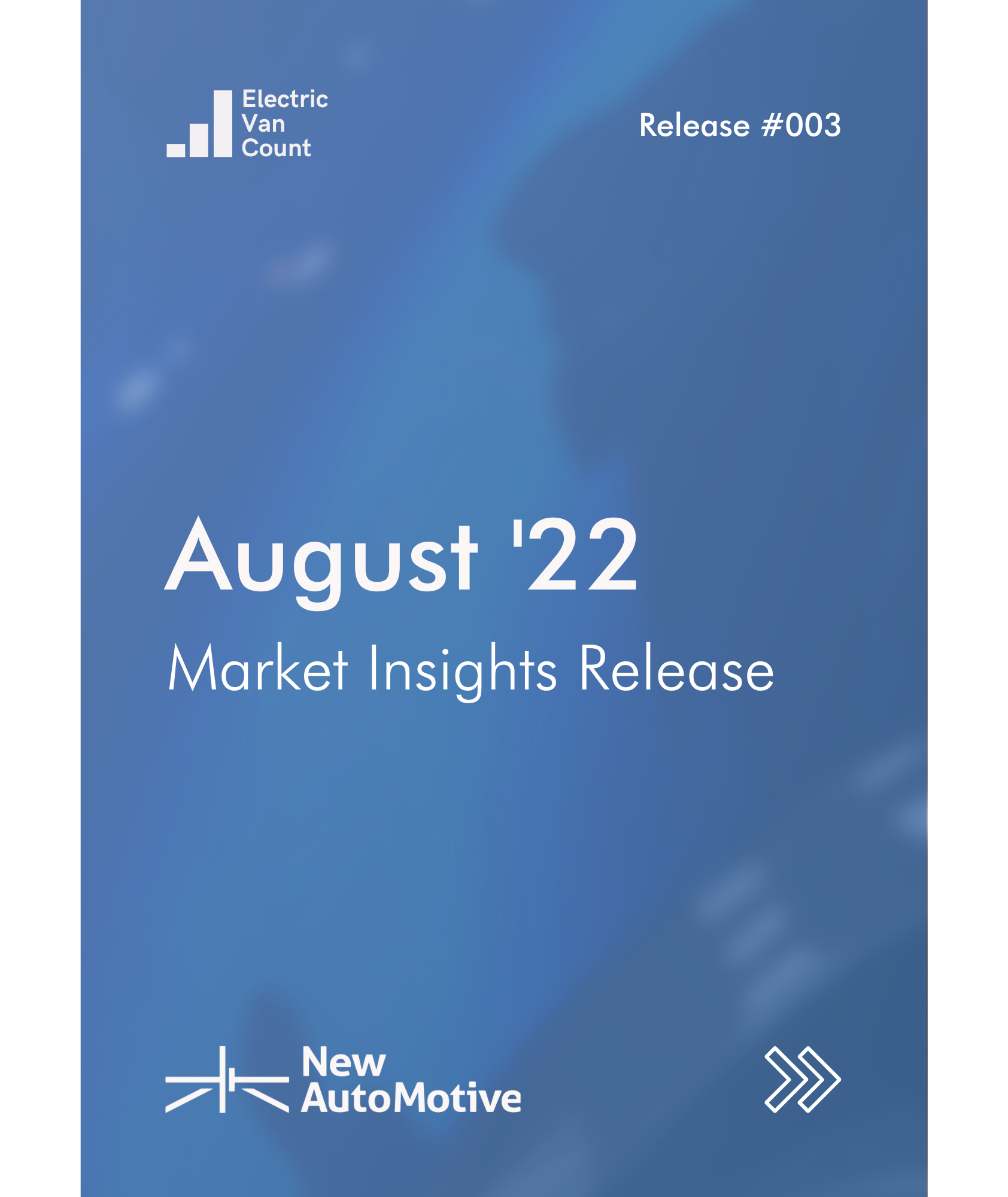
Electric Van Count
Welcome to our data portal for the UK van market. The data is updated every month to provide live information about the speed of the transition to electric vehicles.
New AutoMotive Members
For unlimited access to our data tools, plus additional expert insight and analysis on the UK’s transition, sign up as a New AutoMotive member.
Memberships are free and allow you to:
🡢 Manage the insights you receive
🡢 Download data plots and research publications
🡢 Access tailored content
Don’t have an account? Sign up
NEW CAR MARKET SHARE
Tracking who sells what
The tools below allow you to explore the share of the new van market. Select a month using the drop-down menu to view information about newly registered vans in that month. Brands with less than 1% share of the market are grouped into ‘Other’.
-
On the left, the pie chart breaks down new registrations by fuel type. The inner pie shows the percentage of newly registered vans that were petrol, diesel, hybrid or pure electric in the selected month. Click on a fuel type in the inner pie to see the manufacturers whose vehicles make up that segment of the market.
On the right, the pie chart breaks down new registrations by manufacturer. The inner pie shows each manufacturer’s share of the market. Click on a manufacturer’s name in the inner pie to see the proportion of their new vans that were petrol, diesel, hybrid, or pure electric in the selected month.
You can also access monthly insights, where we analyse the trends - giving you the key information.
REGISTRATIONS OVER TIME
Measuring market growth
The charts below track the growth of electric vans, showing cumulative electric van registrations and the share of monthly new registrations of vans that are fully electric.
Market Insights Library
Access our past Market Insights releases here. Subscribers get instant access to the data - as soon as it is live. If you want to be first to hear about a new monthly Market Insights publication, sign up to our mailing list below. To get access to the full library of releases, contact data@newautomotive.org
How we did it…
We used data from a variety of sources to create this data tool. We’re constantly working to improve it, and would love to hear your views - email us on data@newautomotive.org.
Terminology
In general, whenever we refer to ‘EVs’ or ‘electric vehicles’, we mean purely electric vehicles, not hybrids. In this dataset, ‘EVs’ or ‘electric vehicles’ refer to electric vans, as per DVLA type N1. This dataset focusses on vans - to see data on electric cars, click here.
Data requests
If you would like access to the data we’ve used to make this, or to find out more about how we did it, we’d love to hear from you. Please get in touch using a form on our Data and Licensing page.
Copyright
All Electric Van Count content - including charts and releases - is copyrighted under Creative Commons Attribution-NonCommercial-ShareAlike 4.0 International (CC BY-NC-SA 4.0). For more information, see the Data and Licensing page.
Methodology
Data sources
We obtained the data from the DVLA’s vehicle enquiry service API, and the DVSA’s MOT history API. These APIs provide access to the vehicle licensing database, which is the record of all licensed vehicles in the UK. The database is updated in near real time, and we refresh our data monthly to obtain the previous months’ new registrations. The data we display covers all vans with a standard form GB and Northern Irish vehicle registration mark (VRM), but does not capture any vehicles with personalised or non-standard new VRMs, meaning there may appear to be slight discrepancies with other similar data series. Our charts include all vans, as defined as type N1 vehicles.
Our data now includes registrations taking place in Northern Ireland.
Contains OS data © Crown copyright and database rights 2021
Contains Royal Mail data © Royal Mail copyright and database rights 2021
Contains National Statistics data © Crown copyright and database rights 2021
Contains OpenDataNI data provided under UK Open Government License
We are grateful to doogal.co.uk for making available much of the data we have used to create this resource.
For a full explanation of how we generate our regional statistics, read our blog explaining how we did it.




























